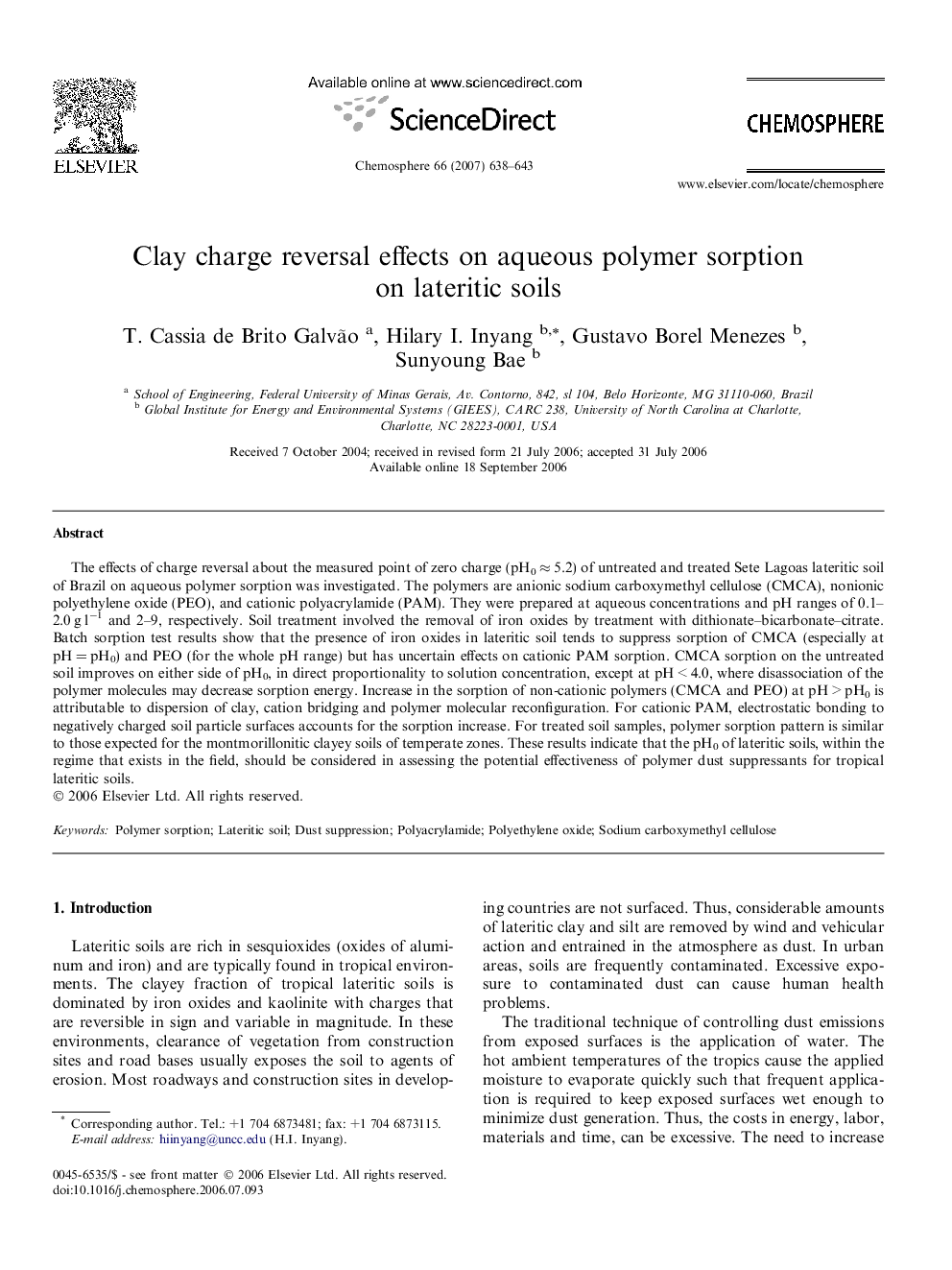| Article ID | Journal | Published Year | Pages | File Type |
|---|---|---|---|---|
| 4416274 | Chemosphere | 2007 | 6 Pages |
The effects of charge reversal about the measured point of zero charge (pH0 ≈ 5.2) of untreated and treated Sete Lagoas lateritic soil of Brazil on aqueous polymer sorption was investigated. The polymers are anionic sodium carboxymethyl cellulose (CMCA), nonionic polyethylene oxide (PEO), and cationic polyacrylamide (PAM). They were prepared at aqueous concentrations and pH ranges of 0.1–2.0 g l−1 and 2–9, respectively. Soil treatment involved the removal of iron oxides by treatment with dithionate–bicarbonate–citrate. Batch sorption test results show that the presence of iron oxides in lateritic soil tends to suppress sorption of CMCA (especially at pH = pH0) and PEO (for the whole pH range) but has uncertain effects on cationic PAM sorption. CMCA sorption on the untreated soil improves on either side of pH0, in direct proportionality to solution concentration, except at pH < 4.0, where disassociation of the polymer molecules may decrease sorption energy. Increase in the sorption of non-cationic polymers (CMCA and PEO) at pH > pH0 is attributable to dispersion of clay, cation bridging and polymer molecular reconfiguration. For cationic PAM, electrostatic bonding to negatively charged soil particle surfaces accounts for the sorption increase. For treated soil samples, polymer sorption pattern is similar to those expected for the montmorillonitic clayey soils of temperate zones. These results indicate that the pH0 of lateritic soils, within the regime that exists in the field, should be considered in assessing the potential effectiveness of polymer dust suppressants for tropical lateritic soils.
